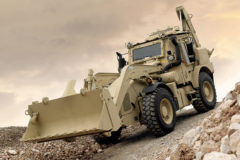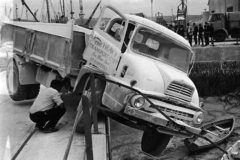Pick up a Pilot!
Posted by Chris Graham on 27th July 2020
Peter Simpson reckons there are plenty of reasons to pick up a Pilot and, what’s more, there no time like the present to do so.
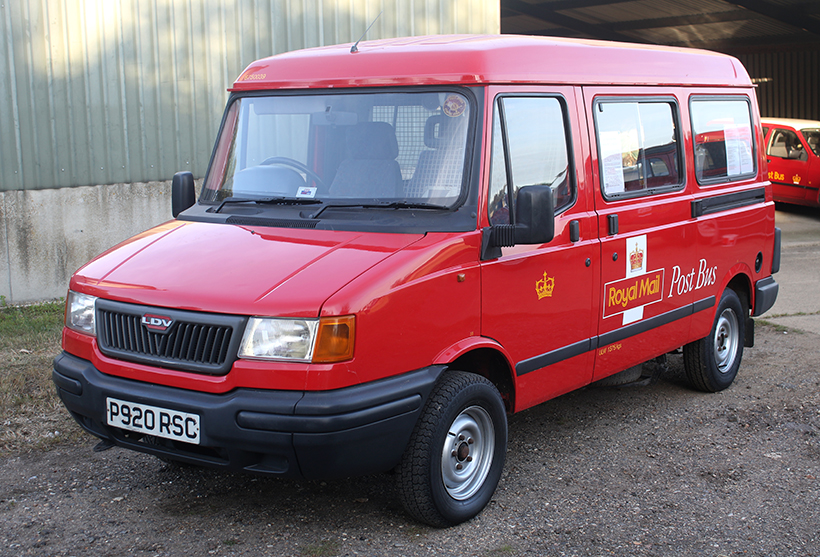
Pick up a Pilot!: Though not the only fleet buyer of LDV Pilots, Royal Mail was probably the best-known. They weren’t all used as mailvans though; this superbly-preserved 1996 Pilot was a post bus on the Denny-to-Fintry route, in the Scottish highlands.
Back in the day, driving an LDV Pilot was a bit like staying in a Travelodge; both were generally things you did because someone else – usually your employer – was paying! Even when introduced in 1974, the ‘Sherpa’ van was hardly state-of-the-art; just compare it to the Mk2 Transit, which arrived the following year. That the Mk2 Transit was, in reality, a heavy facelift of the Mk1 introduced in 1965, made the comparison even worse. The Sherpa, arguably was a facelift – albeit a more radical one – of the BMC J4, which dated back to 1960.
By the time the final incarnation – the LDV Pilot – arrived in 1996, any serious attempt to compete with the likes of Ford, GM or VW on quality were long-gone. The restyled front happened as much because changing pedestrian safety rules meant a change was needed, as to give the van a fresh, new look. The latter wasn’t really necessary, as the Pilot was now really just a price-driven fleet-only buy, aimed mainly at utilities and publicly-owned or funded concerns, such as the armed forces, local authorities and, of course, the Royal Mail. Here, buying something that was very obviously British, and being seen to be being frugal with taxpayer’s money, were good things…
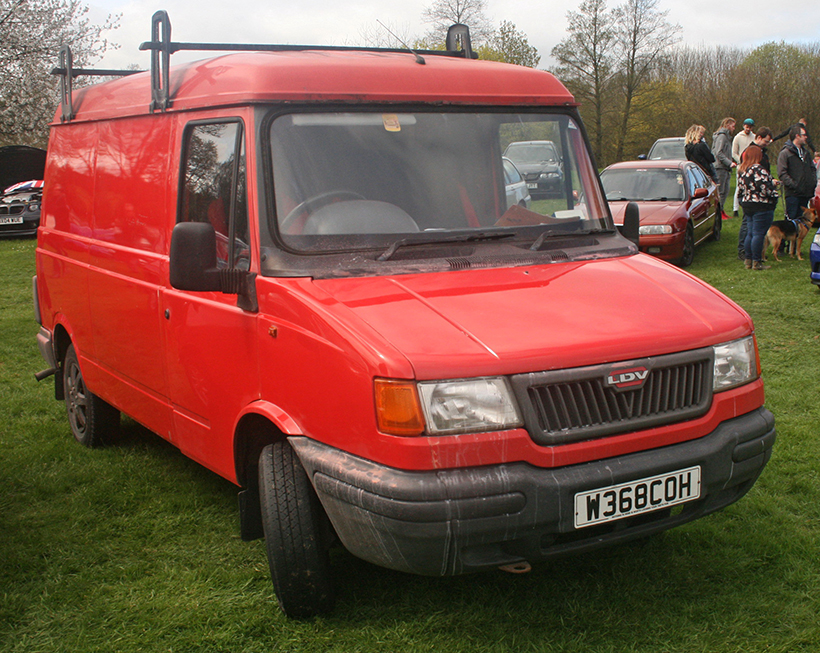
How most of us will probably remember them, but no longer a familiar sight on street corners; This 2000 Pilot looks like an ex-mail van. Spotted at the 2018 Pride of Longbridge, in ‘working van’ condition, and attracting a lot of interest…
Practical plus-points
But having said all that, the Pilot did have its plus-points. For starters, one big benefit which the Post Office, in particular, made full use of, was the fact that it was narrower than most rivals. This meant that it was a lot more suited to use as a city delivery van. A Pilot could get into places where a Transit couldn’t. This was a big advantage and, for urban, multi-drop work, its lack of high-speed refinement really didn’t matter at all.
And there’s no getting away from it, an awful lot of Pilots were sold over the years – you really did see them everywhere, both with their original owners, then with subsequent owners and their original fleet identity still pretty obvious. As the vans got older, the relative lack of sophistication was seen by many as an advantage; many faults which might mean specialist attention on other vans could, on a Pilot, be fixed at the roadside. A Pilot might start to look scruffy quicker than other vans, but the typical tradesman owner really wasn’t bothered by that.
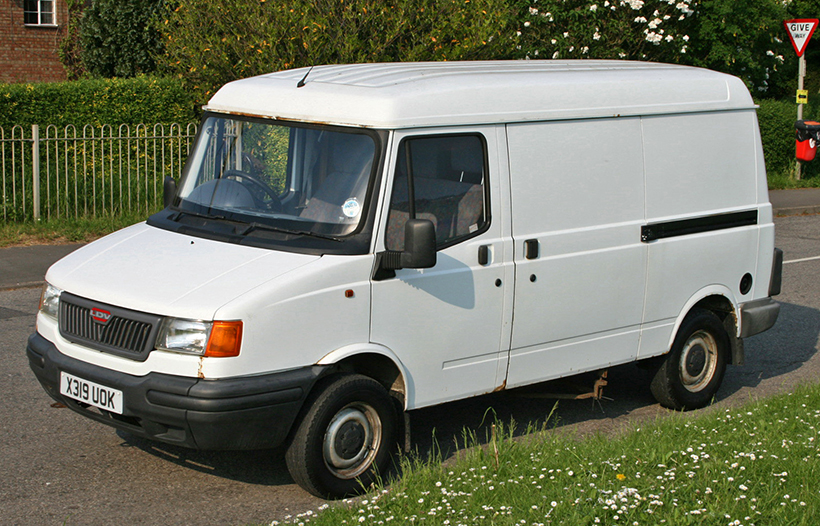
I owned this ex-Severn Trent Water Pilot for a year during a major house renovation project; bought for £1,200, and eventually sold for the same price, its departure was delayed by a queue of people wanting to borrow it. Sadly, it seems to have had a catastrophic MoT failure last year and has, I presume, now been scrapped.
However, in the past couple of years, most have, it seems, vanished from regular, revenue-earning use. Look around and you just don’t now see Pilots parked on every street corner any longer. This is basically an age thing – the youngest is now 14 years old and, with a typical fleet life of 5-6 years followed by a similar time at least with subsequent owners, it’s clear that any which remain now are survivors which, for one reason or another, have lasted long past their expected time…
These days, they’re also surprisingly scarce on the market. At the time of writing (admittedly mid-way through the coronavirus lockdown), I have been unable to find a single Pilot van on sale anywhere. In fact, the only example on the market at all, was a professionally-converted camper. So, if you do want one, you really do need to buy it now.
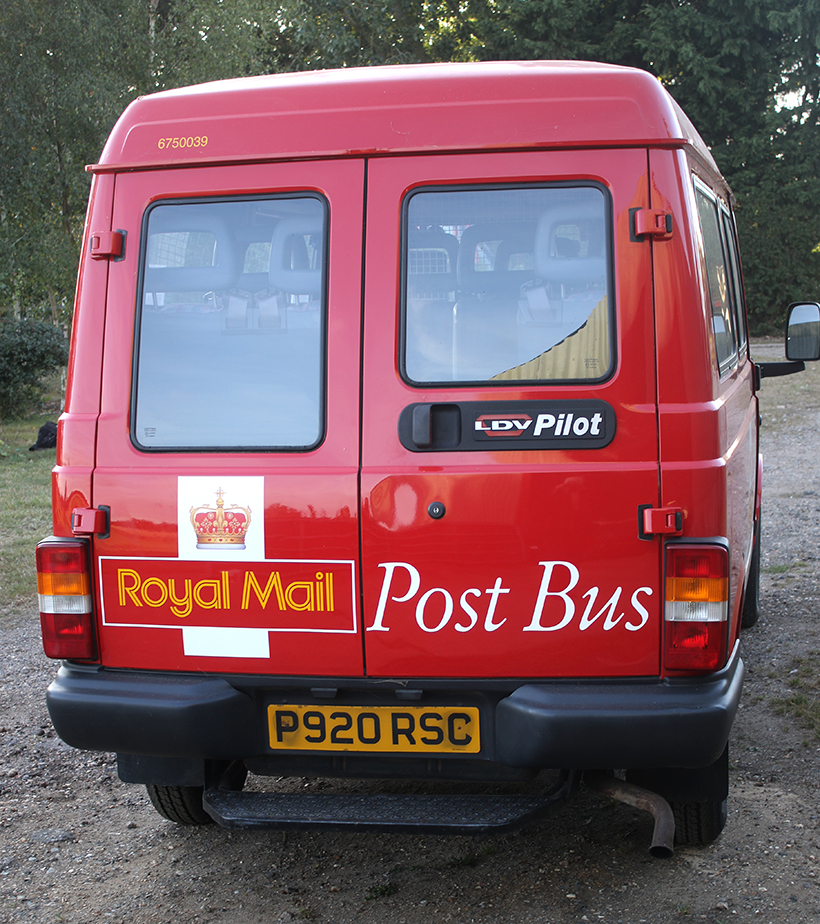
Preserved postbus from the rear. They rarely looked this straight in service!
Why buy one?
Well, rarity is an obvious consideration. They’re also incredibly useful – the white van shown in the photos here is one I bought a few years ago to use in a major house renovation. I owned it for about 18 months, and it proved absolutely invaluable – big enough to take 10 sheets of plasterboard if loaded sensibly, yet low enough to fit under the ‘no trade waste’ barrier at the local recycling centre. It was also a great ‘load up as you sort out’ van, for selling surplus stuff at a car boot. Oh, and on one day which I’d rather not remember, we used it to collect a massive wardrobe kit from Ikea!
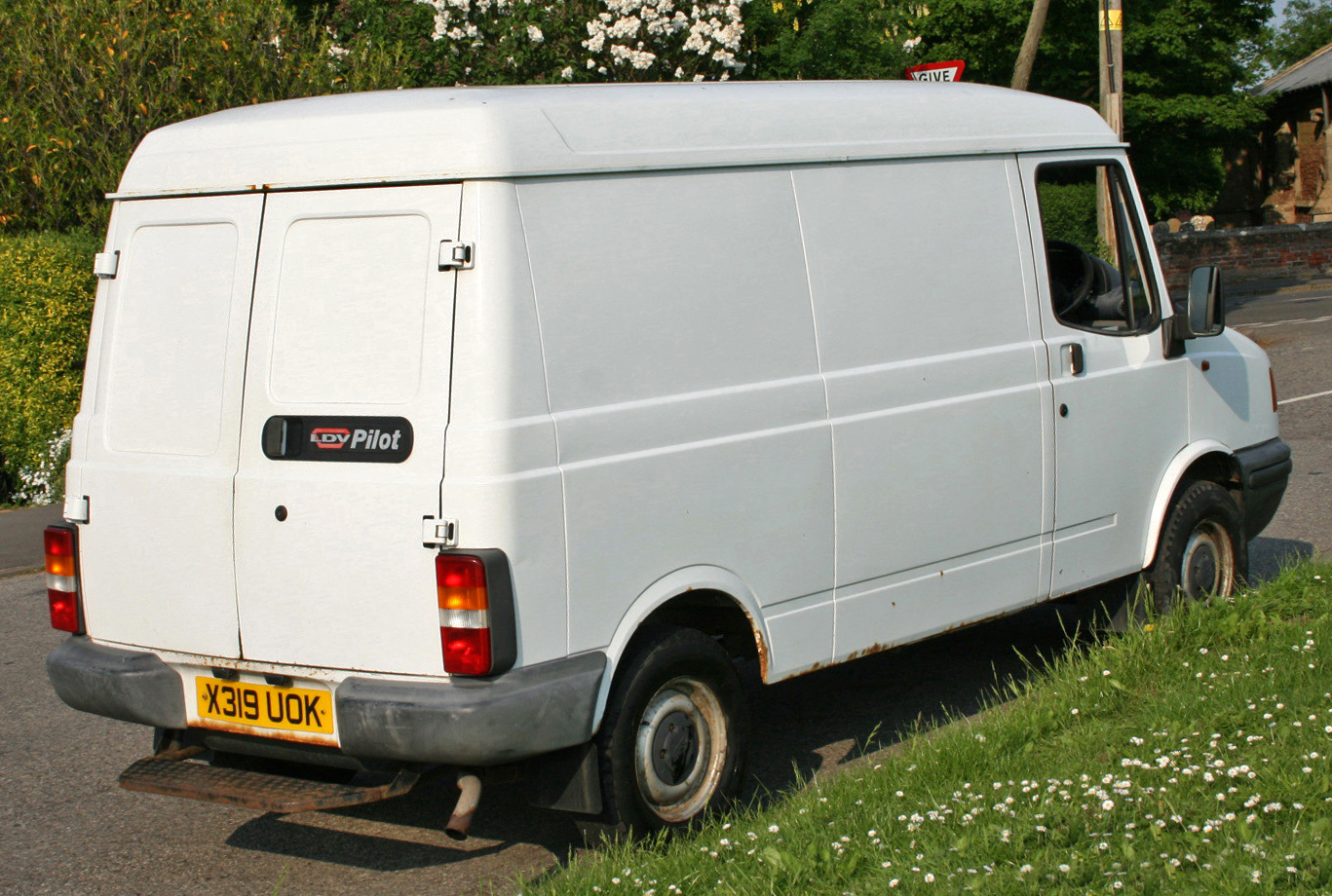
From the rear. Back-end was very much based on the BMC J4 of 1960. When buying, do look out for rot in and under the roof gutters which, if extreme, can threaten the body’s structural integrity.
But, best of all from our point of view, the Pilot’s old-fashioned design makes it much more DIY-friendly than any contemporary van. If an early-noughties Renault or VW ‘fails to proceed’, you’ll probably be into some diagnostics. With a Pilot, on the other hand, the fix is more likely to involve screwdrivers, spanners and maybe a hammer…
What to look for
Though I’ve generally used the term ‘Pilot’ in this piece, as that’s the version you’re most likely to come across – anything else can now be considered rare – most of the buying advice applies equally to the previous incarnations.
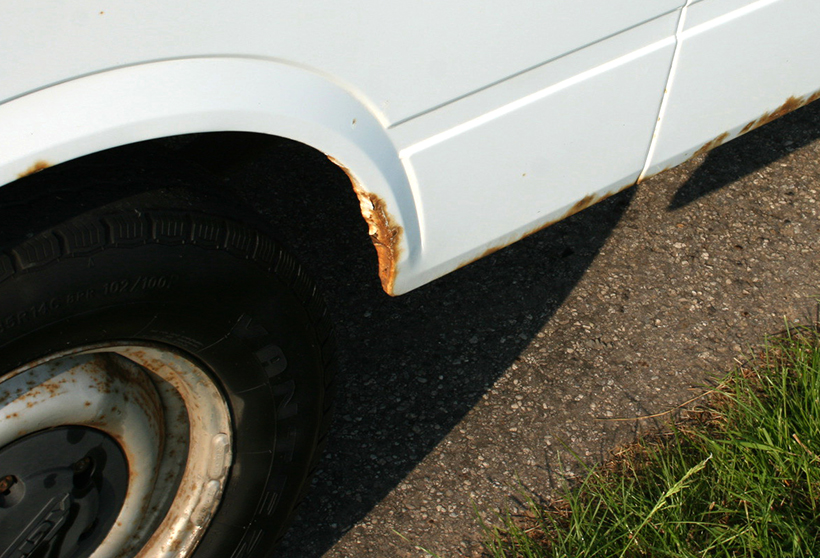
Although Pilots can look scruffy and rusty quite quickly – white ones, in particular – a bit of arch-bubbling like this isn’t indicative of major structural failure. Look underneath and around the cab and load space floor. I can’t show you what rot here looks like because I didn’t buy one with that problem!
Generally speaking, it’s all traditional and refreshingly familiar stuff, with underbody rot being the main concern. Weak spots include spring mounting points (especially at the back) and, within the cab, the steps, seat and handbrake mounting point – problems with the latter can be localised, stress fractures caused by use, or evidence of more serious issues. Inner sills and seatbelt mounts can also rot, and look at the load space floor, especially adjacent to the rear wheelarches.
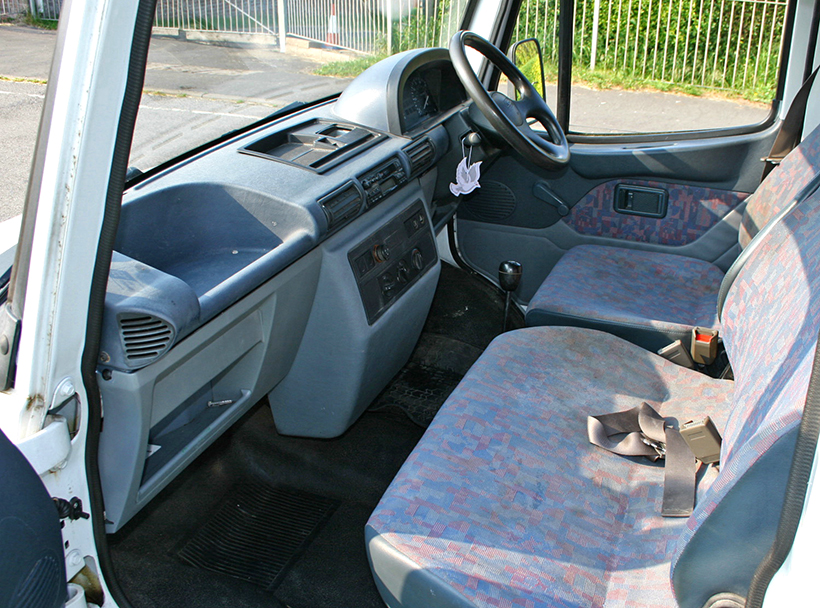
Pilot had restyled dash and seats – due to changing safety regulations – but the overall cab layout remained unchanged. You can also spend ages playing ‘spot the BL car bit’ while you’re in there!
Sliding door runners can also corrode and, although these aren’t ‘structural’ as such, rot here will make the door insecure. On top, look out for rot in the roof guttering, and make sure the body doesn’t want to twist when the rear doors are open. Visible rust in the various panel seams is also a problem, though this is usually cosmetic rather than structurally-significant.
On the mechanical side, it’s all very traditional really. Most vans under consideration will have the Peugeot 1.9 diesel – a tough and sturdy unit, although not the fastest thing on earth. There may still be a few, earlier vans clattering around with the BL MDI/Perkins Prima direct-injection engine; this is actually an excellent and economical (if unrefined) engine if serviced regularly, so much so that most vans with this motor have been scrapped for their engines.
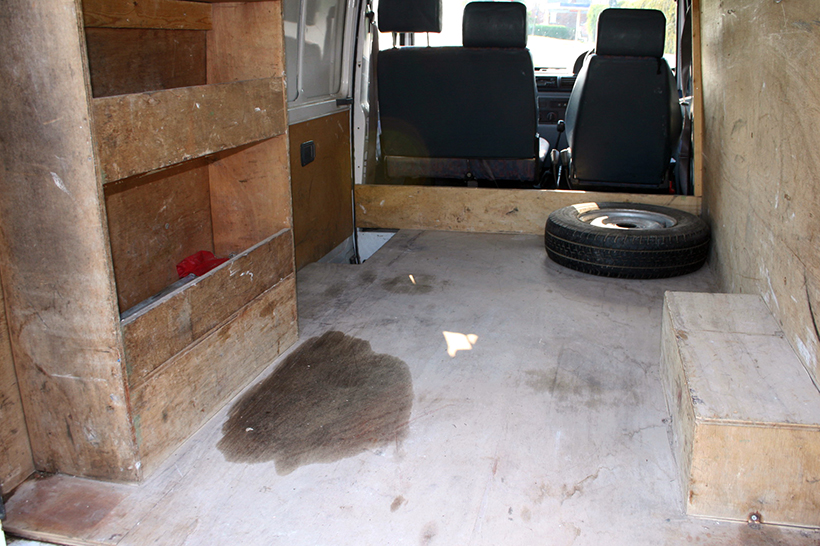
Water company and other public utility vans were usually sold-off with their internal boarding and wooden storage intact, and this an actually be very useful. I once even bought one which, having been used to transport a pump or generator, even had a fully-operational two-ton crane in the back!
Gearboxes are normally OK – if synchro is weak, you live with it and, similarly, a bit of rear axle noise (exaggerated by the van body) goes with the territory. Provided that the oil level is fine, it’ll probably run like that indefinitely. There are, though, some ‘traditional’ MoT failure issues to watch out for, in the form of worn kingpins (yep, kingpins!), corroded brake and fuel pipes, broken springs, worn steering joints and so on. Nothing terminal and, at present at least, nothing that can’t be found.
Parts availability
That, conveniently, brings me on to another plus-point of owning one of these vans. Very little about a Pilot was bespoke – LDV wasn’t big enough. Rather, parts were bought in, often from what remained of the midlands component manufacturing industry. Just look around the cab, and you’ll see lots of familiar BL-era switches, instruments, door handles and so on!
These vans are also at the stage of life where, quite simply, there are probably more parts for them tucked away in stores, workshops, garages and the like, than there are vans which need them; they’re the sort of thing which can often be picked up for next to nothing at autojumbles, especially if you know what things look like and/or have a few part numbers.
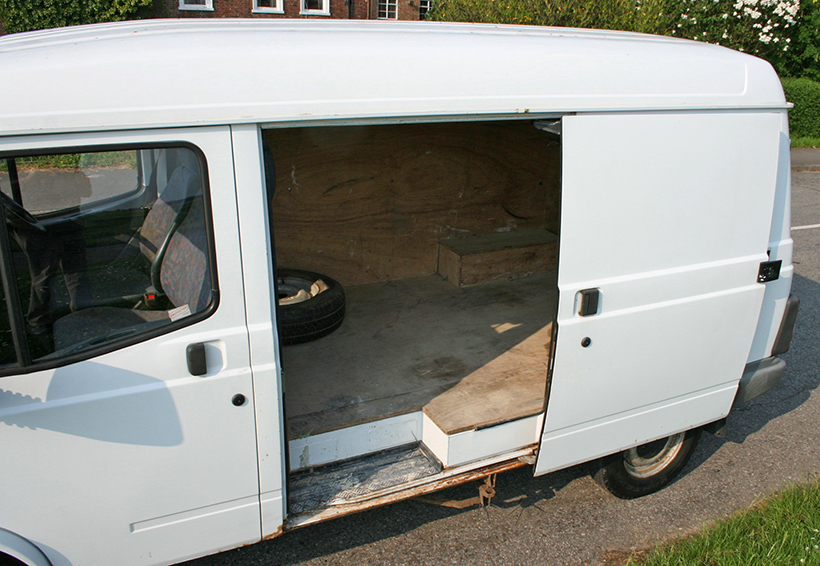
Side-loading door was useful. Make sure it works as it should, as problems in this regard might be caused by the bottom run having rusted out; not always an easy repair and, if the door is insecure, a potential MoT failure.
Final thoughts
Pilot vans are getting rarer – of that there is no doubt. However, adding one to an existing vehicle collection could make a lot of sense. They’re extremely useful things to have around the place (it took me three months to sell mine after I’d finished with it, simply because people kept wanting to borrow it!) and, to use farming terminology, they don’t generally ‘eat a lot of grass’ while in your possession; you can leave one standing for weeks or months, and it’ll rarely need more than a jump-pack to get it going. Ideal, perhaps, for a lorry enthusiast to own as a sort of ‘works van’ – something to collect big and/or heavy bits with and carry jacks and other heavy equipment. Alternatively, just buy one to preserve in its own right, before there aren’t any left…
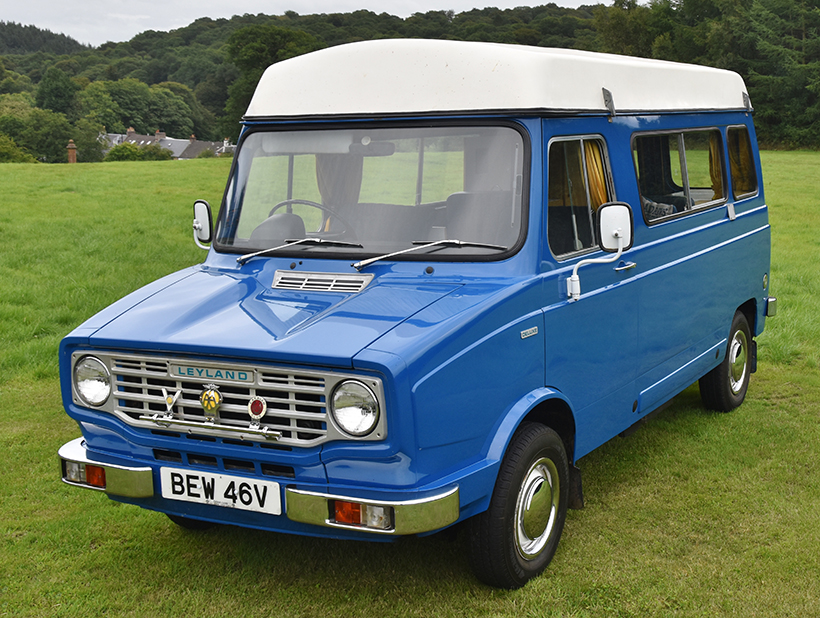
This is a genuine Leyland Sherpa dating from 1977 – the base vehicle was built two years before its Buccaneer camper conversion was completed and registered. Most ‘Sherpas’ that survive do so due to being caravanettes.
PILOT MODEL HISTORY
Derived from the BMC J4 of 1960, the ‘Sherpa’ van was introduced in 1974 though, for the first year, it was known simply as the Leyland van. The main difference was moving the engine ahead of the cab, so it was accessible via a bonnet rather than from within the cab. This allowed the wheelbase to be extended, resulting in greater stability, more payload, side loading and that distinctive, ‘Sherpa’ profile. The feature arose, it’s claimed, not so much to give the van a much-needed advantage in city streets, as to enable its manufacture on car production lines.
In all, the ‘Sherpa’ van was in production for 32 years, but it went through several changes of name and specification during that time…
Sherpa (1974–1982)
The initial line-up consisted of vans in 185, 215 and 240 versions (185 denotes a GVW of 1.85 tons, and so on); 215 and 240 pick-ups, a 240 crew bus and minibus; and various chassis cab options in 220 and 250 versions.
Payloads were quoted as 13/14cwt for the 185; 18/19cwt for the 215 and 220; and 22/23cwt for the 240 and 250. Load space, at 190cu.ft (5.4 m3), was significantly greater than the J4’s.
In 1978, with the BMC B series engines being replaced by O Series units on BL cars, the Sherpa’s 1,622cc and 1,798cc B Series petrol engines were replaced by 1.7- and 2.0-litre O Series units, but the 1,798cc B series diesel remained.

A once every-day sight on UK roads.
Then the range was re-designated. Vans: 200, 230 and 250; pick-ups: 230 and 250; minibus and crew bus: 250 only; chassis cab: 255 only. A few months later, the Sherpa was rebadged as a Morris.
In 1981, BL created the Freight-Rover division, as part of the Land Rover group, and the Morris Sherpa became the Freight-Rover Sherpa. At the same time, a Landi-Hartog LPG conversion was offered.
Sherpa K2 (1982–1984)
The K2 Sherpa had a neater appearance and improved side access to the load bay, and the van could now be bought in 200, 230, 250 and 280 versions. The crew bus and minibus continued in 250 form. Load space remained at 190cu.ft (5.4 m3), but a new ‘Hi Capacity’, walk-thru body was also offered on either the 255 or 280 chassis cab, offering 330cu.ft (9.3 m3) of load space. An optional Luton body took load space up to 460cu.ft (13 m3), again with a choice of basic chassis cab GVWs.
The integral pick-up was dropped in favour of a dropside pick-up, built on the Sherpa chassis-cab. The 255 and 280 chassis cabs were also available on their own, ready to receive bespoke bodywork. Petrol, diesel and LPG engine options remained unaltered, and a 4WD Sherpa van was also now offered.
Freight Rover 200 Series (1984–1989)
From 1984, the Sherpa became the Freight Rover 200 series, and gained square headlamps, new bumpers and repositioned indicators. Alongside the original body style there was a new, wide-bodied variant, known as the Freight Rover 300 Series. The 200 Series was initially available with a two-tonne GVW. The capacity for the 200 Series remained at 190cu.ft (5.4 m3).
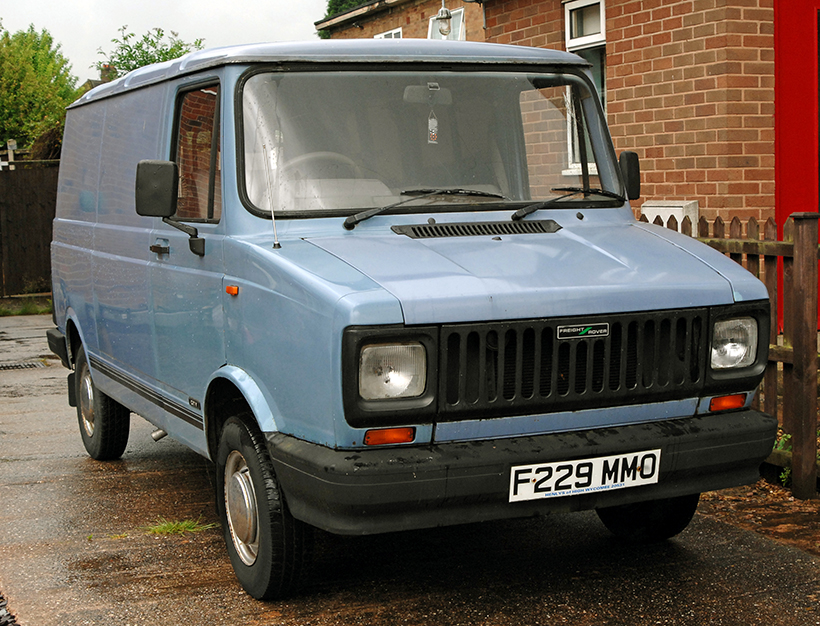
Freight-Rover 200 from 1988. Note square headlights and slightly neater front end compared to the original Sherpa. (Photo: Russ Harvey)
A Luton-style body was offered, built on the 255 chassis cab, providing a capacity of 400 cubic feet (11 m3), and a maximum payload of almost two tonnes. The chassis cab also formed the basis for dropside pick-ups in 255, 280 and 285 versions, again with short or long wheelbases. The chassis cab could also be ordered on its own, again in a choice of lengths with single or double cabs, for fitting bespoke bodywork. The 200 Series continued to be offered as minibus or crew bus.
Engine choices remained unchanged from the K2, though the 300 was available with a 2.5 diesel and, in November 1986, the ancient B Series diesel was finally dropped, replaced by the Rover MDI/Perkins Prima direct-injecton 2.0-litre unit – as used in Maestro cars and vans and, in turbocharged form, in the Montego. Effectively a diesel version of the BL O Series, the Prima was the ideal boss’s engine – reliable and very good on fuel, but also very noisy. At the same time, the O-series 1.7 and 2.0 petrol engines were given an upgrade, becoming the O2.
From 1986, a low-compression version of the Rover 3.5 litre V8 was offered on certain versions of the 300 Series (with a modified drivetrain). With 132hp on tap, this was, as intended, popular with the police and ambulance services, where power and speed mattered more than the overall fuel consumption of 14.1mpg!
Leyland DAF/LDV 200 Series (1989–1997)
Freight Rover was absorbed into Leyland DAF in 1987. Two years later, the 200 Series was given a new radiator grille, bearing the Leyland DAF badge. In 1992-3, the engine was changed from the Perkins Prima to the less economical but more refined, naturally-aspirated, indirect injection PSA XUD 1.9-litre engine. Leyland DAF went bust in 1993, and the van business was bought by its management, becoming LDV Ltd, and the Leyland DAF 200 became the LDV 200.

Royal Mail LDV 200 from 1995; the final variant before the Pilot. Apart from the subtle change in badging and a different engine from 1992/3, the 1989-on Leyland DAF 200 was pretty-much identical.
LDV Pilot (1997–2006)
In 1996, the van received a facelift, getting less boxy front panels and a redesigned dashboard and seating – mostly changes forced on it by changing safety regulations – and was renamed the LDV Pilot. The facelift also saw the end of the 1980s Rover indicator and wash/wipe stalks, first seen on Maestros and Montegos. Early models have basic interiors consisting of two or three seats, Mountain Blue-coloured plastic dashboard and an LDV-branded FM/AM cassette radio. In this form, the van remained in production until 2006, when it was replaced by the all-new Maxus.
For a money-saving subscription to Classic & Vintage Commercials magazine, simply click here



